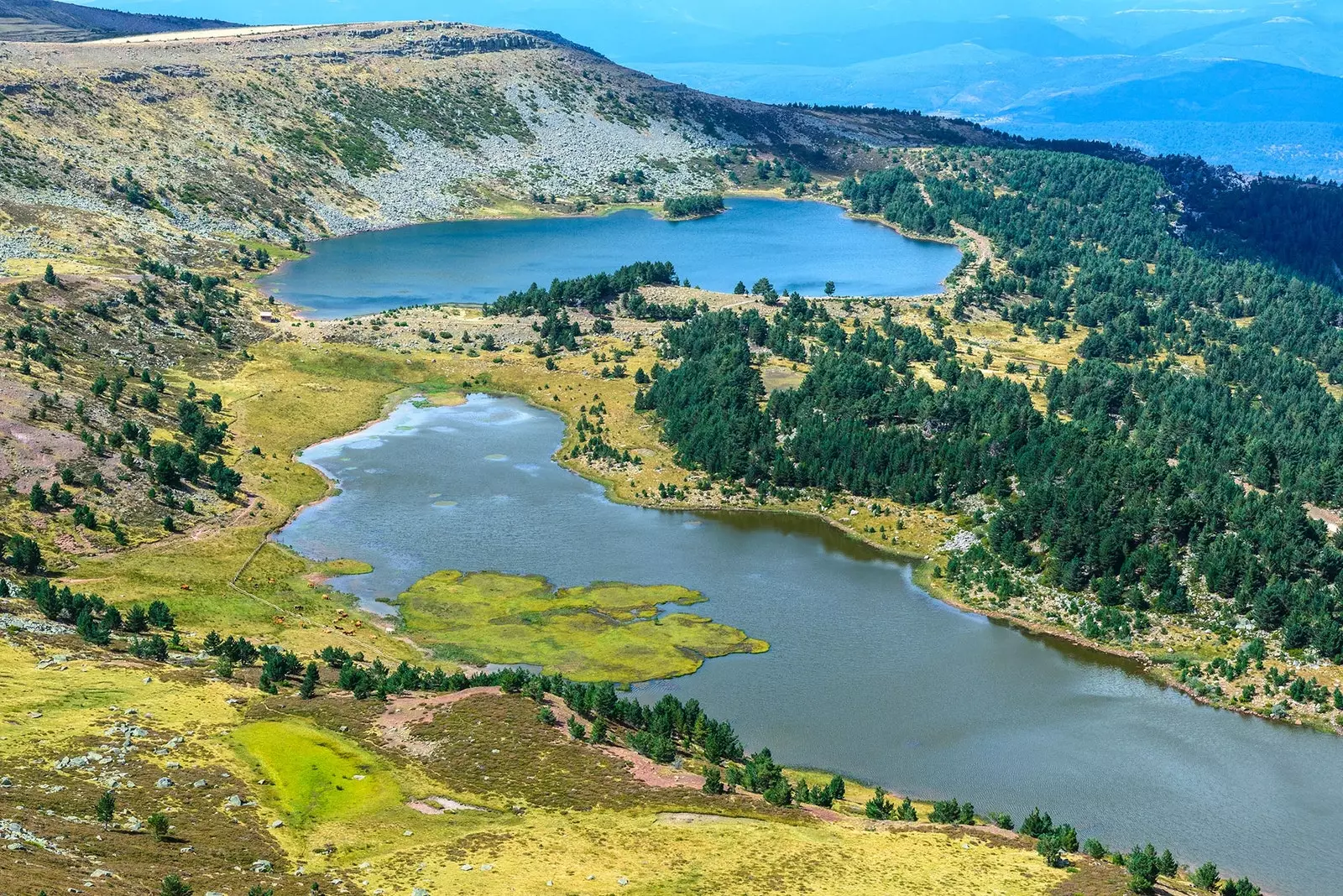
On a route through the Burgos area of the Comarca de pinares
Greenways, canyons, frozen lagoons, ancient caves and even cult movie locations are just some of the things it offers Pinares, a natural region divided between Burgos and Soria.
we are ready to tour its part of Burgos on a busy weekend with enough activities to fill an entire month.
The stepped houses on the southern slope of the Sierra of Neila welcome us to Quintanar of the Sierra , our base of operations.
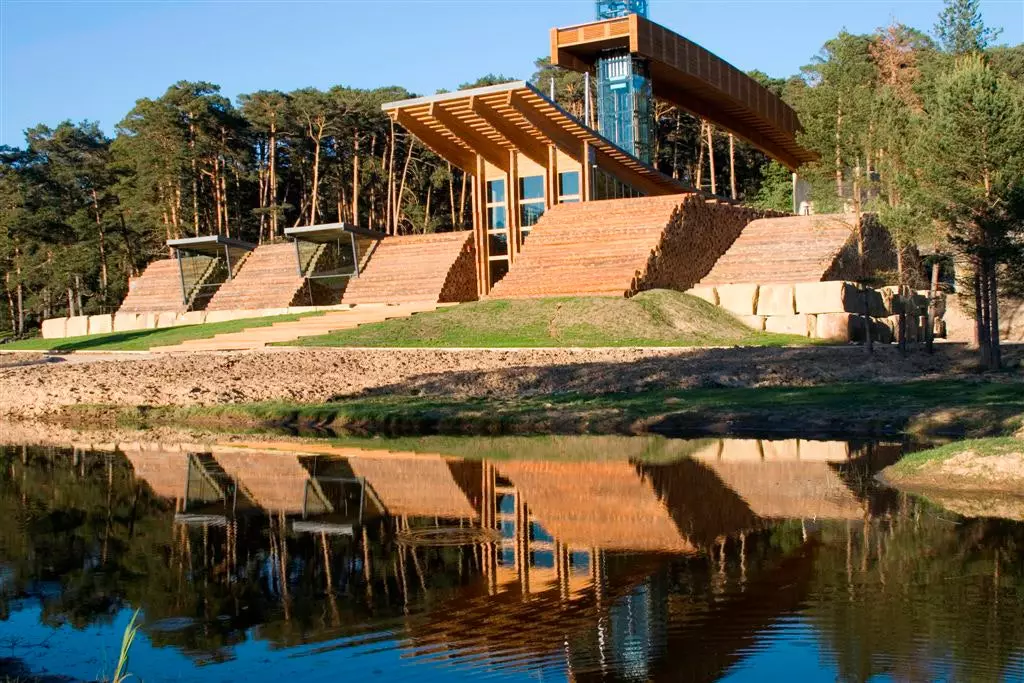
Wood House
We will soon discover the parish church of San Cristóbal (17th century) or the Plaza del Ayuntamiento, adorned with its bandstand. Its viewpoint offers a great panoramic view of the area, with the ruins of the hermitage of San Martín on the outskirts and, everywhere, the pine forests that give the region its name, whose communal exploitation became one of its main commercial engines in the 20th century.
the unnoticed bar the gazebo, which is reached by going down some stairs on one side of the square, is the ideal place to have a good beer. Dinner and bed await us in The Mayans , rural inn with charm and care for the detail that stands at the entrance of the town. The best: its black pudding from Burgos and its original tapa of torreznos.
DAY 1
We visited in the morning Covarnantes, on the outskirts of Regumiel de la Sierra. Is about a naturally occurring cave between huge stone blocks which is reached by taking a short walk. The vegetation everywhere, the water falling in small waterfalls over the rock and the small pine trees that have managed to grow against all odds in its upper part give the complex a curious beauty.
Crossing the orifice in question, we will arrive at a gorge that serves as a viewpoint of the valley created by the Gumiel River. Its interior has served as a refuge for farmers (keeping between 500 and 1,000 head of sheep), Muslims, Carlists and, according to the neighbors, the Cura Merino himself, who would have used the niche dug in the rock to give mass.
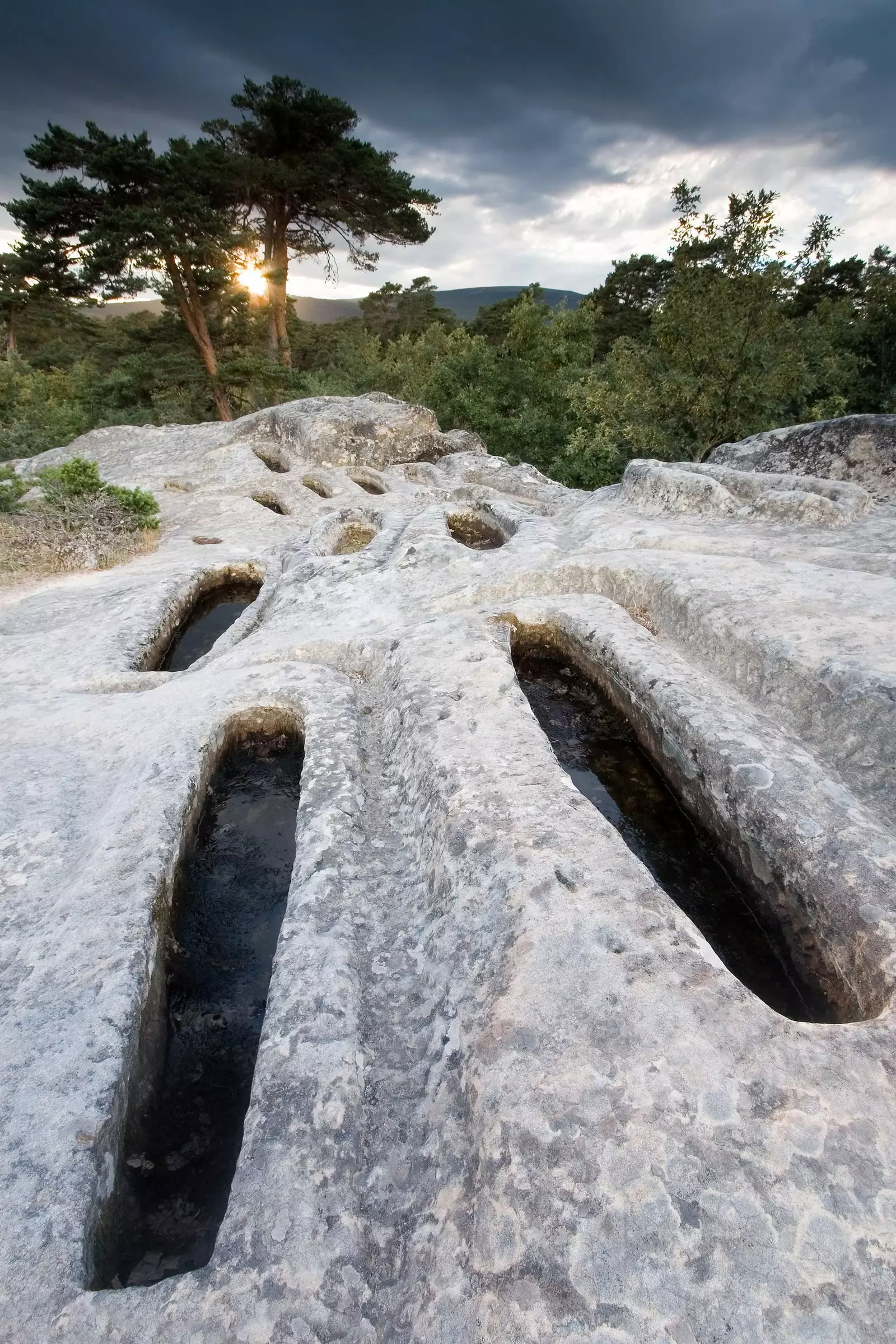
9th century necropolis
Back on the main road and going upriver just five minutes away, hidden among the flora are the remains of the House of the Biscayne , used in its day for forest exploitation and whose stone walls, eaten by moss, give it a particular photogenicity.
In the Communard of Revenga , land shared between Canicosa de la Sierra, Quintanar de la Sierra and Regumiel de la Sierra, stands proudly the house of wood , a place where any self-respecting lover of nature and environmentalism should look out.
It's about a building built from wild pines that mimics the way they are stacked once felled. Its interior houses didactic classrooms, workshops and permanent and itinerant exhibitions on the world of wood and forest exploitation. An elevator lifts visitors to their imposing upper terrace putting our vertigo to the test, with a spectacular panoramic view.
We walk down the ramp that gives access to the back to enjoy the pilgrimage that every last Saturday of May takes Our Lady of Revenga in procession, carried in the arms of the women (dressed in regional costumes) while the men carry the banners and the local band plays serranillas. The festival is accompanied by various craft stalls, food, rides and open-air taverns.
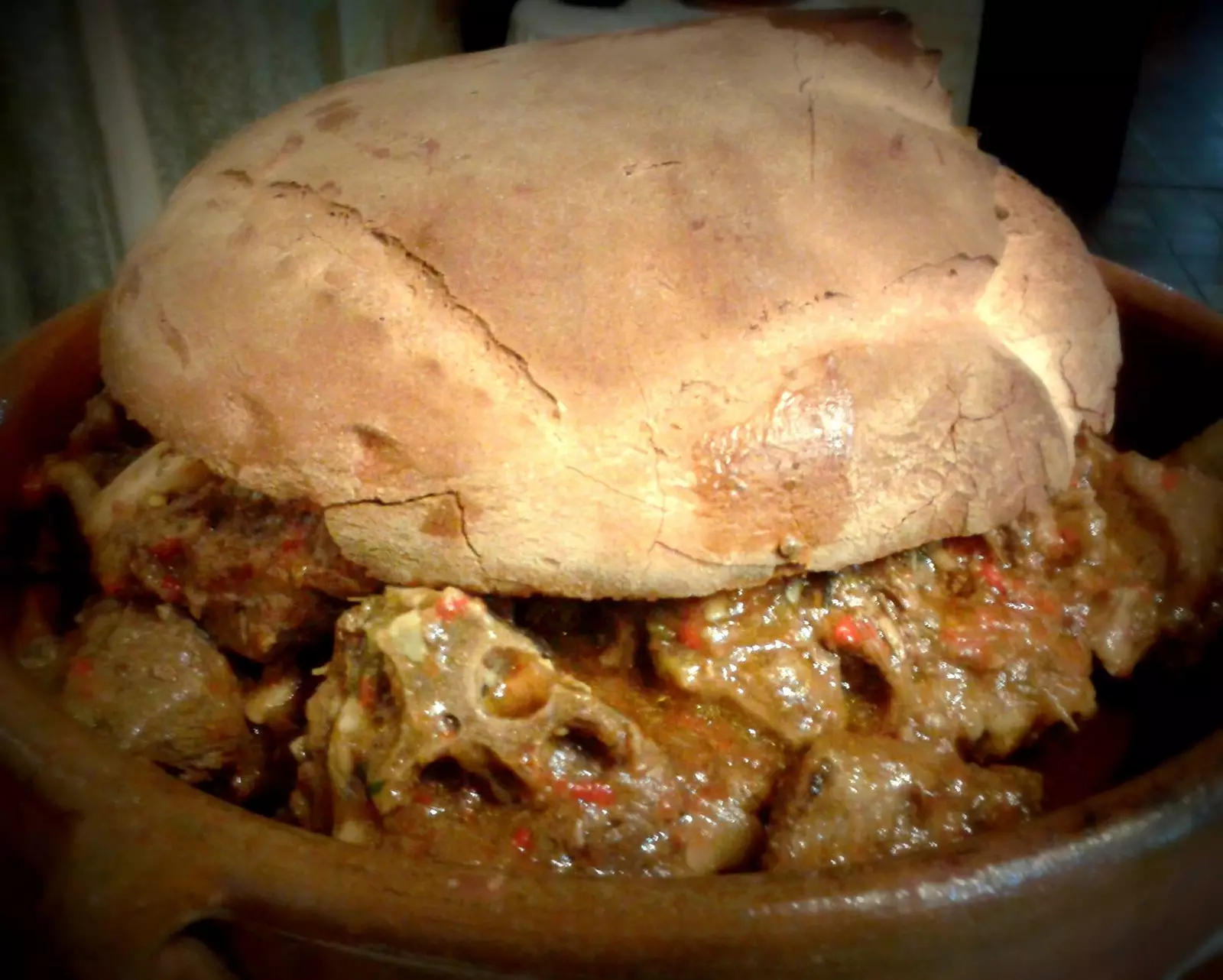
road garlic
Before continuing our route we look at the early medieval necropolis from the 9th century , with 133 anthropomorphic tombs carved into a rocky outcrop.
Surrounded by nature and stork nests, **on the outskirts of Vilviestre del Pinar, Mesón El Molino** is the place chosen to taste a local recipe that is as exquisite as it is surprising: road garlic (profession to which they traditionally dedicated themselves in the region).
Is about a stew of machorra goat (dead without giving birth) slow-cooked with mushrooms, various vegetables and whole heads of garlic for seven hours, making meat that would be expected to be tough and melt in your mouth. It is served inside a huge loaf of bread cut in half : the upper part is uncovered to serve the chicha together with a piece of bread from the lower part (impregnated with sauce) and covered again to keep the heat until the next round. The curious thing is that, unlike the stew, after the meat, the soup that has come out of the same pot is served as a second course.
We cannot leave without visiting the small open-air ethnographic museum in the back, with carts, various farming implements and a huge forge.
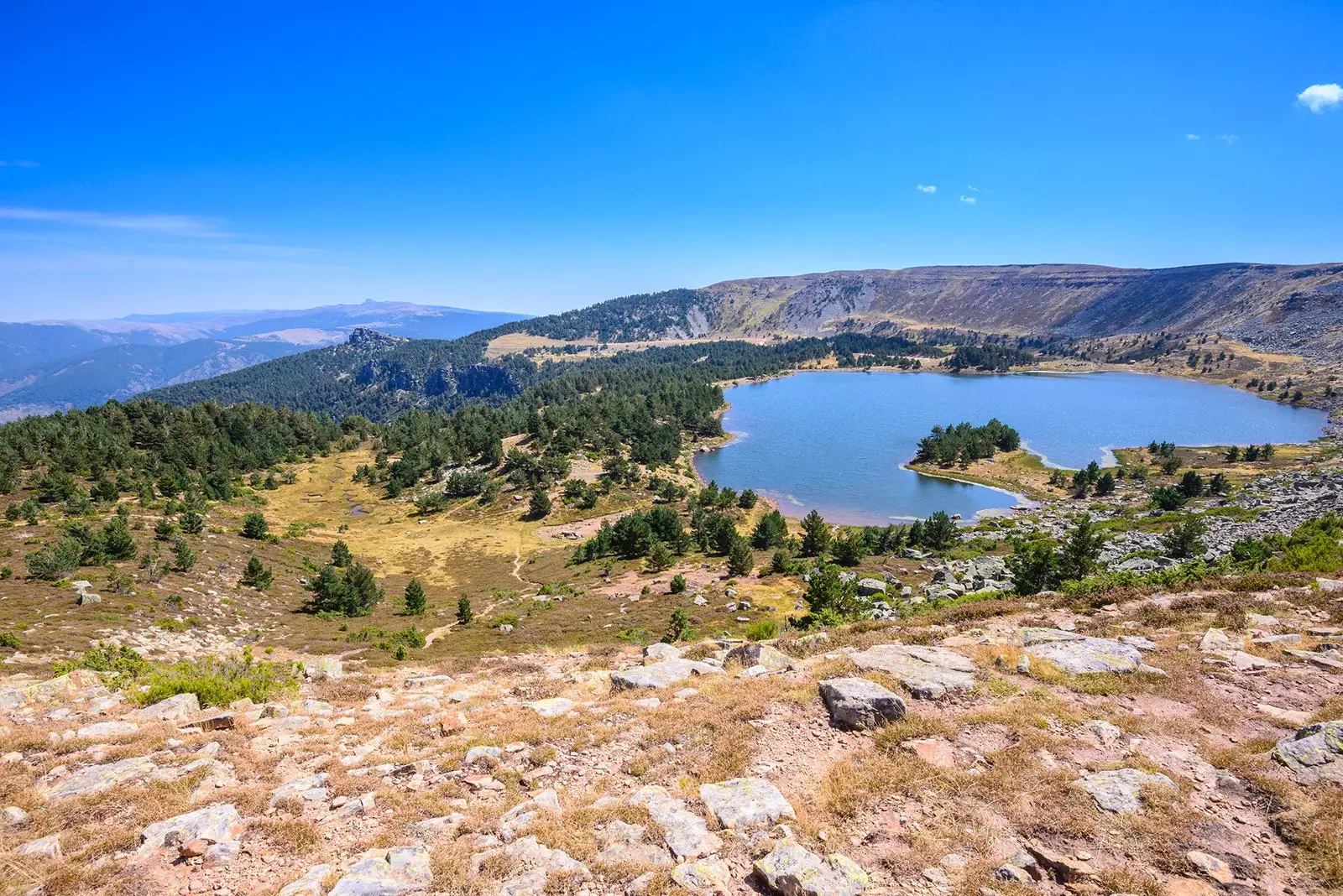
Neila Lagoons
There is no better place to wash down such a copious meal than Hontoria del Pinar. In its outskirts we will soon find its old station of the greenway (Camino Natural Santander-Mediterráneo), converted into a lodge and adorned with a pair of Apache tipis outside to organize children's summer camps.
After crossing the area that has been conditioned for the parking of motorhomes, we headed for the access west to the popular Rio Lobos Canyon , a unique spot carved out by the erosion of the riverbed on the limestone between Burgos and Soria, which has achieved in its own right the cataloging of Natural Park.
We walk through the Don Miguel trail until reaching the Chozo de Resineros , rebuilt to show the traditional way in which the resin was extracted from the pines.
Back in the car, we went up to the Costalagos viewpoint to contemplate the impressive panoramic views of the area. Its height allows you to see the horizon as far as the ski resort of La Pinilla ( Segovia ).
We finished the visit spending a few photos of our camera in the bell tower bridge, that allowed in past times the Roman road to cross the river Lobos.
The day ends back in Quintanar de la Sierra with a **dinner at Casa Ramón**, where we taste mycological delicacies such as Grilled or scrambled boletus of perrochico.
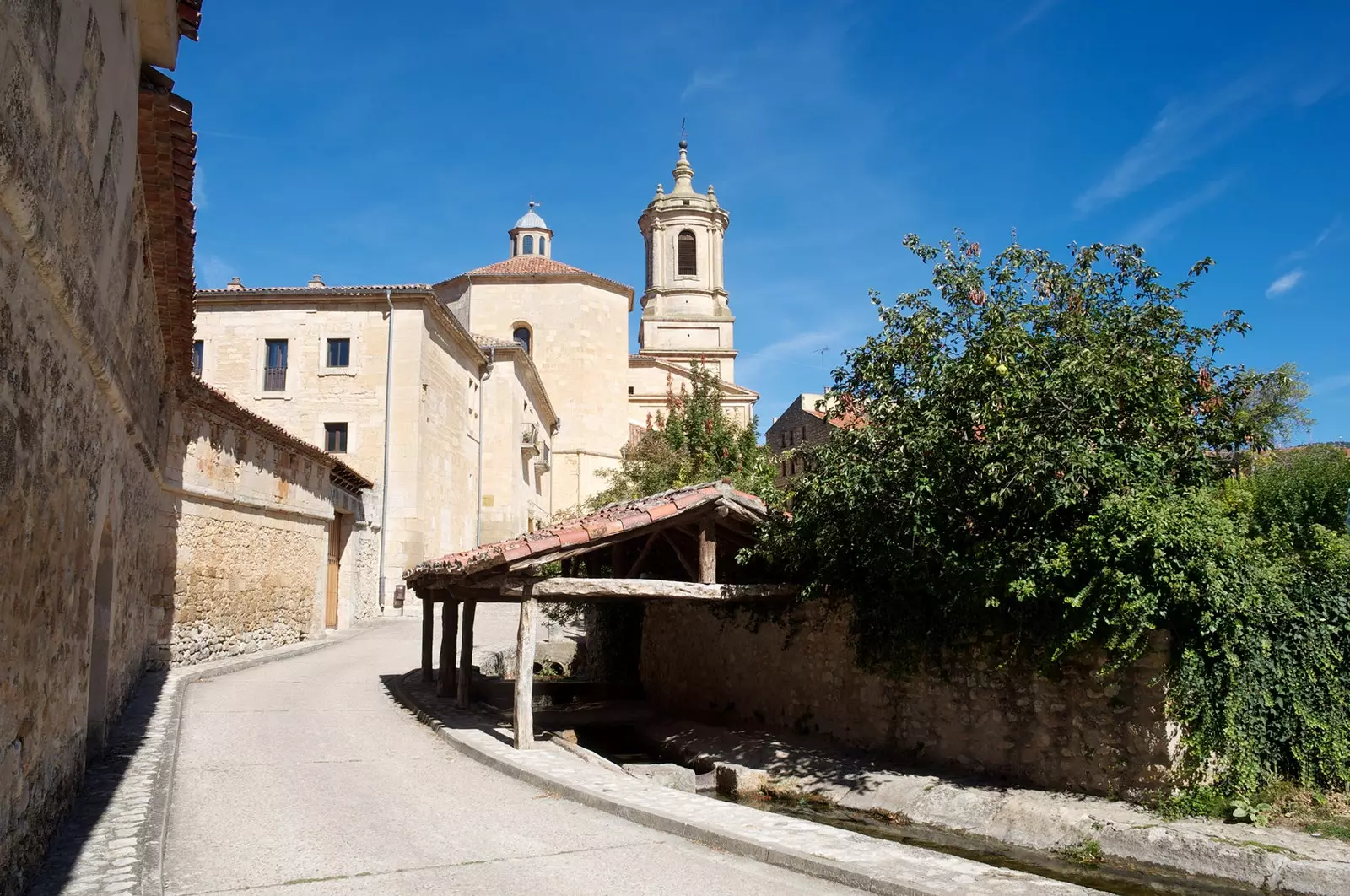
Santo Domingo de Silos
DAY 2
The Cascade Lagoon , fed by several torrents of water that arrive from various points of the rocky wall where it is enclosed, it may be the most spectacular of the Neila Glacial Lagoons.
The High Lagoons Park It has several car parks along your road network from which visitors can walk to the various lagoons, on routes that range between 20 minutes and one hour.
The best panoramas will be found in the Laguna Larga and Laguna Negra (not to be confused with that of Soria), housed at the top of the mountains.
The magical reflections of the Duck Lagoon and the long-lived trees that are next to Laguna Grande (which may well remind us of the Ents from The Lord of the Rings) also offer infinite possibilities to photographers.
All of them have on their shores wooden shelters where to spend the night, contacting the town hall in advance. Its origin dates back to the last glaciation, and it is the ideal place for fans of ice climbing.
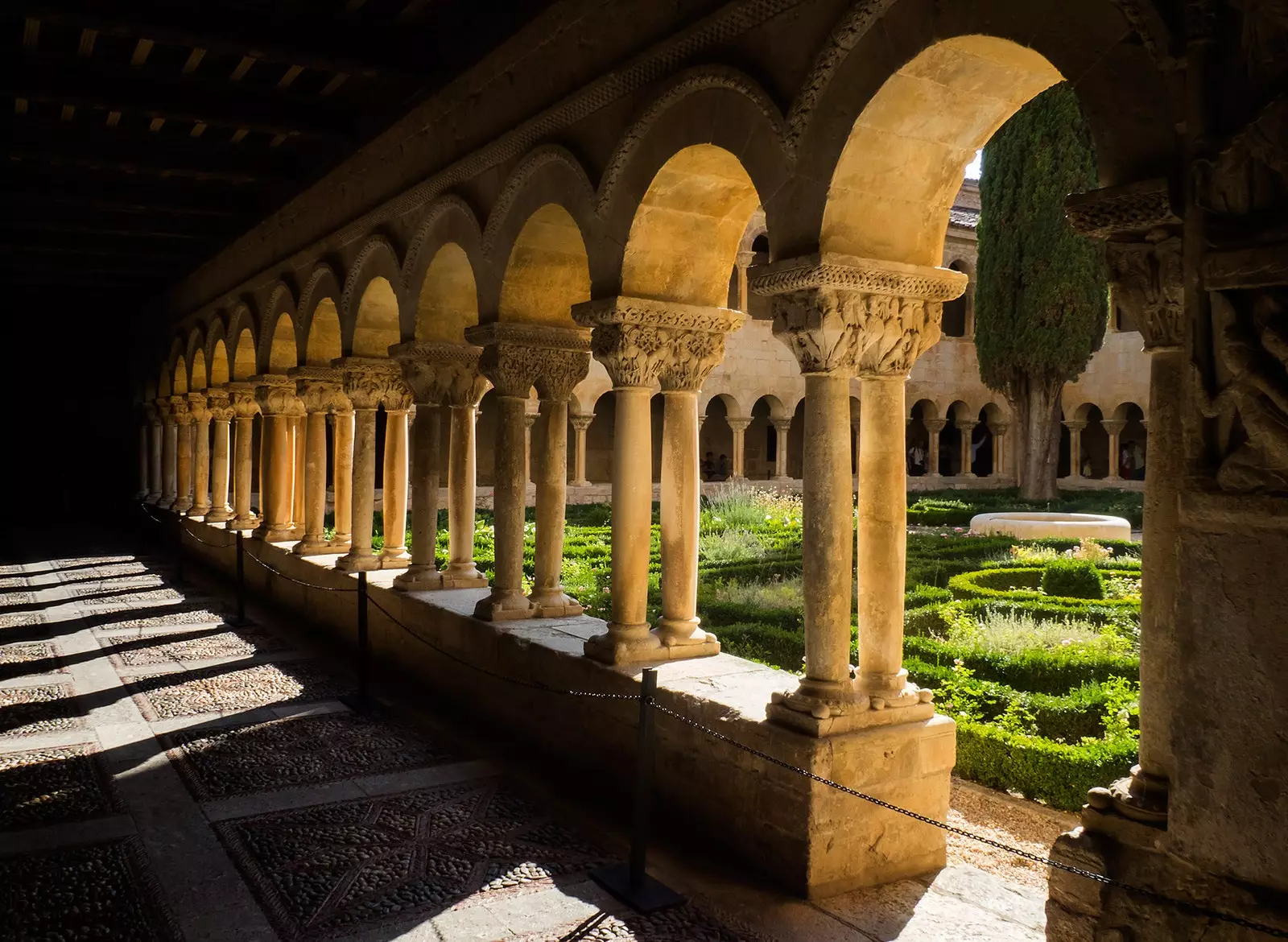
The monastery, essential visit
Before embarking on the return home, there are two reasons to enter the neighboring Sierra of the Demand. The first is the Sad Hill Cemetery, on the outskirts of Santo Domingo de Silos, where Sergio Leone shot the final scene of his most applauded film: The Good, the Bad and the Ugly. Although he repeated locations in Almería and the Sierra de Madrid, the truth is that the spaghetti western master recorded most of the final installment of the Dollar Trilogy (starring a still unknown Clint Eastwood) in this Burgos mountain range there by 1966.
In 2014, as part of the celebrations that were preparing for the 50th Anniversary Of The Cult Tape, various lovers of cinema and the area came together to create the Sad Hill Association with the aim of restoring the cemetery , left all these years by the hand of God. The place can now be visited, the most enthusiastic of the film can name one of the graves after him and the process has been shot in the documentary Sad Hill Unearthed, which will be released this coming October.
The second reason, obviously, is to visit the monastery of Santo Domingo de Silos. But since it's time to eat and we can't leave without trying the suckling lamb , we entered the restaurant first Hotel Three Crowns of Silos , where we will also taste at the end **your own gin (Gin Silos) ** to help our digestive system, pushed to the limit throughout the weekend.
We access the guided tour of the monastery , which includes a tour of the ground floor of the Romanesque cloister and various adjoining rooms such as the chapter house, the apothecary (where a pharmacy from the beginning of the 18th century is preserved) or the museum (with an exhibition of images, paintings and goldsmith pieces).
However, what this monastery is known for on half the planet is for his famous Gregorian chants , which even hit the record ball in the mid-90s. People who want to go listen to the monks live just have to go to any of the daily celebrations in your church which, as liturgical ceremonies, are free entry.
We return home in harmony, with less sleep, extra kilos and a great desire to return.
